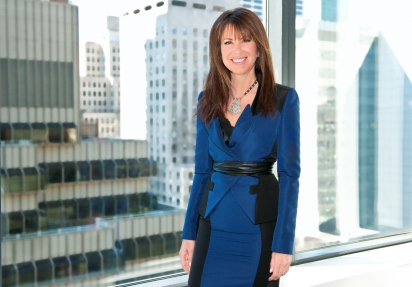Will the Second "Second Screen" Be a Game Changer? - Jacquie Corbelli-BrightLine

The initial tally is in: we love our tablets. Fifty five million of us now have one, and spend an average 2.4 hours of our day on it, checking email, searching the web, and -- wait for it -- watching TV. And why not -- they're powerful, convenient, and portable and if you have the latest iPad, the video looks great. Alas, a "second screen" has officially entered the TV fray. It's not the first time. Remember the laptop? Back in the late '90s we grew to love this versatile device too; its portability and instantaneous access to the internet were a hot and increasingly popular combination.
By 2005, about a third of viewers were watching TV with a laptop within reach; many experts bet it would be just a matter of time before we would abandon our big stationary box in the living room for the small, portable one on our lap. Yet, the trend never prevailed. In fact, despite all reports that continue to suggest otherwise, over 98% of our total TV viewing still happens on the big stationary box, and "two-screen" viewing and interactivity (that's what interacting with your TV show using your laptop was called) never really caught on.
It begs the question: Can the tablet achieve what the laptop could not? The jury is out, but given the relatively rapid rate with which we are integrating these devices into our life, combined with the many differences in our overall behavior since the tablet overtook the laptop, the odds are definitely much higher this time around.
Déjà vu All Over Again Reading about the birth of a second TV screen is a serious déjà vu for the original pioneers of using a laptop to make interactivity on TV possible.
• Football audiences across the country participated in a synchronous interactive experience, viewing live stats, real-time polling, and an interactive game aligned with the actual broadcast; viewers competed against fans nationwide. • Emmy Awards viewers used their second screen to participate in real time polling and celebrity gossip synchronized with the live event. • And MTV, History Channel, TBS, and Game Show Network, all aired their top shows with second screen interactivity. Audiences of highly rated game shows on ABC and NBC played along with contestants, competed in national leaderboards that appeared in the TV broadcast.
It sounds like snippets of the day's news or a small glimpse into the future, but this all happened over a decade ago.
Studies conducted in this initial "second screen" period showed that offering viewers a way to engage with a show using their laptop helped big ad sponsors increase viewers' "recall" of their brands. However, the number of viewers that actually used their laptop to interact with the show at this time was less than 1%. Audiences found it difficult to take advantage of these synchronous interactive experiences, and the numbers of viewers that did so were not large enough to justify the cost of creating them. Over time, they evaporated and died.
Many important considerations help explain why: • The viewers watching TV with a laptop within reach, were doing so in a world where only 43% of viewers had in-home access to the internet; today that number is 72%. • What's more, just 5 MM homes had a broadband connection in their home, versus over 78 MM today, according to Magna Global Forecast Data. (Most will remember the archaic struggle to "dial in" for internet access, and how the juice often just didn't seem worth the squeeze.) • Also at this time, only 18% of viewers reported surfing the internet while watching TV; that number has jumped to over half, or 56%, today.
Enter the Tablet
Among the many shifts in the portable device landscape and in consumer viewing behavior overall, no change is more significant than the tablet. It offers all the qualities of being a real game changer in the success of "second screen" TV and interactivity. In addition to the adoption and usage stats above, here's what's different this time:
• Tablets now comprise 15% share of viewing full-length TV episodes after traditional TV, according to Viacom and laptops and desktops are no longer the main choice after traditional TV screens. • 62%of us use our tablet daily, for an average of 2.4 hours per day • 74% of tablet usage is done at home, and 85% of use is for personal reasons versus business • 79% of viewers are interested in interacting with their television programming and advertising
These dramatic lifts in reach and shifts in behavior are tangible signs that the tablet is offering a compelling and enjoyable way to view and interact with our favorite programs. But, are the gradual changes in behavior and relative ease with which viewers can now watch and interact with TV programming enough? The lasting impact of the tablet sensation is probable for a few reasons:
• As a supplement to TV, the device allows us to view video in all the places we can't carry our 50 inch screen from the living room; • As a search and discovery vehicle -- it doubles as a remote control, on steroids; • And its instant access to the internet and our social media networks means it's a companion that allows us to both view and interact synchronously with our TV experiences.
There's no evidence to suggest that tablets compete with the TV for our viewing time. When given the choice -- whether we're 5 or 95, we opt for a 40-inch viewing screen to a 9-inch one. But its portable screen, and the increasing "TV Everywhere" options from both service providers and networks, is expanding the number of places and times we can watch our favorite show. Nearly half already use tablets while watching TV, and 57% of television multitaskersare already using their tablet to search for content related to their show.
This time around, our behavior suggests that the tablet may be the third leg, after internet and broadband penetration, to making second screen viewing and interactivity a success.
By Jacqueline Corbelli, as seen on The Huffington Post on May 4, 2012.
Jacqueline Corbelli is the co-Founder, Chairman and CEO of BrightLine, an advertising and marketing firm, which creates and implements interactive TV (iTV) advertising strategies that engage target consumers in a two-way dialogue with brands, such as Unilever, Glaxo, SmithKline and Kellogg's. Accounting for 95 percent of all iTV activity, BrightLine is recognized as the market leader in exploiting the latest digital technologies to create interactive brand experiences for television viewers. Jacquie can be reached at jcorbelli@brightlineitv.com.
Check us out on Facebook at MediaBizBloggers.com
Follow our Twitter updates @MediaBizBlogger
The opinions and points of view expressed in this commentary are exclusively the views of the author and do not necessarily represent the views of MediaBizBloggers.com management or associated bloggers. MediaBizBloggers is an open thought leadership platform and readers may share their comments and opinions in response to all commentaries.


